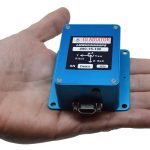Moving at the Speed of Government: Ligado 5G Plan Inches Forward
Six months ago, the FCC unanimously granted Ligado’s amended license modification applications to deploy a low-power terrestrial nationwide network in the L-Band. Petitions for reconsideration remain pending, interest groups continue to agitate for change, Congress awaits answers to conflict-of-interest questions—and Ligado presses forward as planned.
By Dawn M.K. Zoldi (Colonel, USAF, Ret.)













